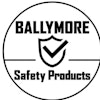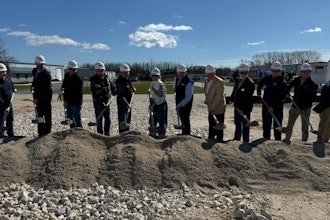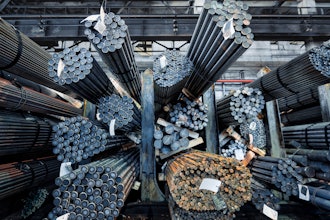Here are the biggest safety hazards for workers in the loading dock, and what distributors can do to minimize their risk.
___
Michael Brittingham, Marketing Communications Manager, 4Front Engineered Solutions
Slippery floors are one of the major hazards at loading docks. According to the Bureau of Labor Statistics, slips and falls cause 15 percent of all lost-time accidents, with a disproportionately high number of these occurring at the loading dock. Considering their environment with the constant wash downs making floors wet and slick, food processing docks are particularly hazardous.
The solution for keeping dock floors drier and safer is installing the right loading dock equipment that minimizes moisture on the loading dock.
Dock doors — Dock doors take a beating from forklift traffic on tight, busy docks. In addition, standard metal doors can conduct heat, leading to condensation on the building interior. Even the slightest bump from a forklift can cause misalignment between the door panels and the doorframe.
Impactable dock doors can prevent those gaps from forming between the door panels and the doorway. Additionally, the doors are designed to withstand forklift collisions and the damage that can leave the doorways unprotected.
The door guides can also protect the doors and ensure moisture stays outside, if the weatherseal is mounted on the door panel rather than the doorframe. One Alabama poultry processor credits their impactable dock doors for preventing the dock from becoming an ice rink in winter.
Dock levelers — Common pit-style levelers have perimeter gaps that enable moisture build-up. Perimeter weatherseal systems are available that effectively close off these gaps without impeding leveler operation.
Wiper Pads — Dock seals and shelters keep out precipitation and should be properly maintained. Wiper pads prevent the rush of moisture on the truck trailer roof from saturating the dock floor.
Yard and Dock Management Systems — Along with tying the dock into the overall WMS, management now has a way to verify if and when a dock door is closed.
___
Mary Blaser, Director of Marketing and Business Development, Frommelt Products Corporation
We often think of forklifts, trailers and fast-paced, congested operations at the loading dock as being the main factors in creating a hazardous work environment in this area. Yet, remove all those things and you’ll spot a significant safety risk underneath: wet, slippery docks. Even with the best dock seal or shelter in place, rain and melted snow can still find their way onto the loading dock, producing wet — or icy — steel dock leveler plates.
Risk of injury increases sharply when surfaces aren’t clean and dry at the dock. Workers can slip; forklifts can slide down slippery ramps, impacting with force into trailer beds while servicing trailers below dock level, causing repeated stress injuries. What’s more, potential for product to be damaged or contaminated from water leaking in at the dock creates a whole new set of problems.
First, make sure your dock seals or shelters are in good condition. Next, and most importantly, apply a heavy, weighted trailer top seal in addition to the base seal or shelter. These seals create a dam that forces flowing water off the sides of the trailer before it can reach the dock door opening. Weighted trailer top seals are especially critical when the trailer is angled toward the door on a decline drive approach, or when yard jockeys are used. In these situations, the entire 450 square-foot surface of the trailer is literally funneling water onto the dock, and something solid and strong needs to be in place on top of the trailer to block the water flow.
A gravity-based secondary seal also maintains constant contact with the trailer as it moves up and down during loading and unloading, preventing water infiltration in a way that a traditional dock seal or shelter simply cannot.
___
Michael Oilar, Product Development, Amerikal Products Corporation
A one-inch gap in the loading dock area can cost thousands of dollars in excess heating and cooling expenses annually. Such gaps are responsible for fluctuating temperatures that cause substantial damage to shipments. Shipments destroyed from unstable temperatures can total millions of dollars annually. Not only is this detrimental to the items being shipped, but it creates an unhealthy work environment for employees.
Gaps in loading dock areas are a point of entry for pests. By using a high quality, insulated dock blanket, entry ways are eliminated and the threat of contamination, infestation and the overall vulnerability of your shipments are reduced.
Rain and snow may also enter the dock plate area through gaps, causing slippery conditions for workers. Moisture allowed in throughout the year may results in structural damage to the dock or the growth of mold and mildew, creating an unhealthy environment for employees and goods.
Managing gaps with a product such as Amerikal’s Dock Blanket can provide a more efficient work place, satisfied customers, and the potential to get more product to more customers.






















